Minga Foundation to Support Native People of Ecuador
Award-winning volunteer is about to found the Minga Foundation. Help the Foundation into to world so it can support the indigenous area of Simiatug high in the Andes, where she educated indigenous children and built homes for the poorest as a volunteer.
Author: Eliška Ochoa
85 contributors pledged
Praha, Hlavní město Praha, Česko
All or nothing. Project finished on Jan 28, 2022 at 12:49.
Choose reward for your contribution
-
sold 20Helping HandDo you feel compassion for the difficult fates of the indigenous people?
You think it's worth supporting the project and you don’t want any reward?
In order to make it Randi-Randi, we will send you at least a proper thank you note by email. It includes a secret bonus.
We also believe that this good deed will return to you from elsewhere.
You can contribute 100 CZK, but it is also possible to increase the amount as you wish.Reward delivery: not specified
EUR 3.96(CZK 100) -
sold 3Ecuador on the palm of your hand - 10% discountContribute 150CZK to our project and gain a special discount for the Ecuador on the palm of your hand e-shop.
They offer delicious coffee and cocoa nibs directly from local farmers, or traditional handmade products such as hammocks, scarfs or "panama" hats. All directly from Ecuador!
We will send you the voucher with a discount code by e-mail when the campaign is over.Reward delivery: not specified
EUR 5.95(CZK 150) -
sold 2Postcards with motives of Ecuadorian mountainsA package of four beautiful postcards with motives of the Ecuadorian Andes.
You can choose your favorite pictures here.
Write the numbers of the selected photos in the additional note.
The price includes shipping for the Czech Republic.Reward delivery: on address, in a week after the Hithit project end
EUR 9.91(CZK 250) -
sold 9A package of e-books from PeruTaste the exotic flavor of Latin America from the comfort of your home!
A special gift from Zuzka Bartáková from her e-shop With love from Peru.
The package includes two e-books in Czech:- Stories from the jungle narrate real stories that Zuzana experienced during her two years stay in the Peruvian Amazon.
- Peruvian cookbook with authentic recipes for 12 dishes from Peru. You can use these recipes to cook in Czech Republic as they are adapted to local ingredients.
It can be a perfect gift for your spouse. Maybe it will give them a little hint that you are missing the food from your homeland.
We will send the e-books to your e-mail when the campaign is over.Reward delivery: in a week after the Hithit project end
EUR 11.85(CZK 299) - Stories from the jungle narrate real stories that Zuzana experienced during her two years stay in the Peruvian Amazon.
-
remaining 88 from 100Traditional handmade braceletIn Ecuador, there is an indigenous tradition of putting a red bracelet on your left hand. Local people believe it protects them from negative energies and even babies wear them.
Check out the gallery to see if you like just the red one, or the traditional with seeds from Amazon, or the one little more garnished.
We will also attach a personal thank you note.
Write your choice along with your wrist girth in the additional note.
It is possible to make a bracelet for babies or children.
The price includes shipping for the Czech Republic.Reward delivery: on address, in a month after the Hithit project end
EUR 11.89(CZK 300) -
remaining 26 from 30Spanish lesson with an Ecuadorian teacherBuy a 60-minute Spanish lesson with a professor and a native speaker from Ecuador.
The lesson will take place in Prague and is suitable for beginners, intermediate and experienced students. Students might be divided into groups according to their level.
You will be informed about the time and place in advance.Reward delivery: in a month after the Hithit project end
EUR 13.87(CZK 350) -
remaining 294 from 300Unique calendar with photos of Ecuadorian landscapeCalendar for 2022 with unique photos from the Ecuadorian Andes. You can see them in the gallery.
The calendar is practical, of A3 format, and includes enough space under the photo for your notes and planification.
It will be delivered in January immediately after the end of the campaign.
The price includes shipping for the Czech Republic.Reward delivery: on address, in a week after the Hithit project end
EUR 15.06(CZK 380) -
remaining 5 from 10Pre-sale tickets for the Discover Ecuador eventA reduced ticket price for the Discover Ecuador event. Only for the first 10 fastest of you!
Special discount only for our supporters.
The event will take place in Prague in cooperation with the Association Spolek "Casa Latinos".
There will be Latin-American music, tastings of Ecuadorian cuisine, and lectures and information about Ecuador.
Everything is already included in the ticket price.
We will inform you about the date and details of the program by e-mail.Reward delivery: in a quarter after the Hithit project end
EUR 15.85(CZK 400) -
remaining 9 from 10Handicraft package - smallHandmade traditional products directly from the indigenous women from Ecuador.
The package contains 2 pieces of coasters woven from local "paja" grass + 1 hand-embroidered bag for coins or small items + 4 postcards of Ecuadorian Andes of your choice.
You can see the products in the gallery.
You can see and select postcards here.
Write the numbers of the selected photos in the additional note.
The price includes shipping for the Czech Republic.Reward delivery: on address, in a quarter after the Hithit project end
EUR 16.65(CZK 420) -
remaining 15 from 15Voucher for AYU rebozosMake two good deeds in one!
Support us with the price of 500 CZK and then choose a rebozo or other cloth for baby carrying on the AYU e-shop.
The cloths and rebozos are made from recycled fabric and they are handmade by single moms from Colombia in need.
This voucher can also be a very nice gift for someone who just had, or is about to have, their baby.
We will send it to you by e-mail when the campaign is over.
The voucher is valid until the end of 2022.Reward delivery: in a week after the Hithit project end
EUR 19.82(CZK 500) -
remaining 17 from 20"Barefoot" voucherDo you want to experience the mountains and feel the Mother Earth "Pachama" like the indigenous people, but you are no fan of cold winter?
There is a solution waiting for you - barefoot shoes that will make you feel like you are not wearing them. Not only will they improve your physical health but they are also trendy.
Buy a voucher from us and then use it to buy barefoot shoes in naBOSo e-shop.
You can also use the voucher in the store in Prague 6.
Immediately after the end of the campaign, we will send the voucher to your e-mail.
The voucher is valid until the end of 2022.Reward delivery: in a week after the Hithit project end
EUR 19.82(CZK 500) -
remaining 2 from 5Handicraft package - mediumHandmade traditional products directly from the indigenous women from Ecuador.
The package contains 2 pieces of coasters woven from local "paja" grass + 1 small handmade shigra from natural fiber "cabuya", which can serve as a bag, or as a cover for a glass or a smaller flowerpot (size approx. 15x8) + 4 postcards of Ecuadorian Andes of your choice.
You can see the products in the gallery.
You can see and select postcards here.
Write the numbers of the selected photos in the additional note.
The price includes shipping for the Czech Republic.Reward delivery: on address, in a quarter after the Hithit project end
EUR 21.80(CZK 550) -
remaining 19 from 20Individual Spanish lesson with an Ecuadorian teacherBuy a 60-minute Spanish lesson with a professor and a native speaker from Ecuador.
The class will be planned according to your specific needs and level and we can guarantee that you will enjoy it.
It can take place in person in Prague or online.
Time and date depend on mutual agreement.Reward delivery: in a month after the Hithit project end
EUR 21.80(CZK 550) -
remaining 4 from 5Consultation of your trip to EcuadorAre you planning a trip to Ecuador and don't have time to search for the travel information?
Consult an experienced traveler.
She will give you 90 minutes of her time and will help you to plan your trip to the last detail.
She will share with you all her secret tips on what not to miss in Ecuador, what to prepare for, and as a bonus she can pass her contacts to the locals.
Consultation can take place in person in Prague or online.
Time and date depends on our mutual agreement.Reward delivery: in a month after the Hithit project end
EUR 31.71(CZK 800) -
remaining 2 from 4Special package for our loyal supporters - smallThe package includes unique postcards of Ecuadorian Andes with personal thank you note and traditonal products handmade by the indigenous women from Ecuador - 2 pieces of coasters woven from local "paja" grass.
You will also receive a unique, practical A3 calendar with photos of the Ecuadorian Andes, that includes a space for your notes.
In addition, your initials will be immortalized on the Thank you Wall at the community center in Ecuador!
Choose 8 postcards here.
Write the numbers of the selected photos in the additional note.
The price includes shipping for the Czech Republic.Reward delivery: on address, in a year after the Hithit project end
EUR 59.45(CZK 1,500) -
remaining 5 from 5Lecture about Ecuador anywhere in the Czech RepublicAre you interested to learn something new about Ecuador? Or do you want to educate someone else on these topics?
We will come anywhere in the Czech Republic and give a lecture with a presentation of photos on your chosen topic:- Volunteering
- Simiatug - History and current issues
- Simiatug - The discrimination of the indigenous women
- Traveling around Ecuador
- Introducción al mundo indígena
Lectured by the author of this project and by her Ecuadorian husband, who is educated in anthropology and has a personal experience of living with the indigenous people of the Amazon rainforest and the Ecuadorian Andes.
Lecture duration 2 hours. The price includes transportation in the Czech Republic.
Date and other details by mutual agreement.Reward delivery: in a quarter after the Hithit project end
EUR 138.72(CZK 3,500) -
remaining 4 from 5Personal cooking class of Ecuadorian cuisineA unique chance to learn something new and bring a little exotic flavor to your kitchen.
The author of the project and her husband from Ecuador, two food and cooking enthusiasts, will be happy to share their tips for Ecuador-inspired cuisine and will teach you how to prepare two proper traditional Ecuadorian dishes.
According to your preferences, you can choose whether you want to learn typical food from the sea or rather from the mountains, or whether you want to combine it.
There will be a dessert, good drinks and cheerful company.
The event will take place in an intimate environment at our home in Prague. You can look forward to hearing many interesting stories from all around the world.
You don't need to worry about anything, you have already paid for everything. Just come, get inspired and enjoy.
Suitable for English or Spanish speakers.Reward delivery: in a quarter after the Hithit project end
EUR 158.54(CZK 4,000) -
remaining 4 from 5Unique photography of Ecuadorian landscapeCreate a unique remembrance of your generosity that will make you happy every day.
You can choose the picture of Ecuadorian landscape here.
We will print it in the format 40x30 on framed acrylic glass or on canvas and you will have a unique decoration for your apartment or office, or you can make someone else happy with an original gift.
Write the number of the selected photo and the style of printing in the additional note.
The price includes shipping for the Czech Republic.Reward delivery: on address, in a month after the Hithit project end
EUR 198.18(CZK 5,000) -
remaining 3 from 3Sponsor of the Foundation - smallBecome a sponsor of the Minga Foundation!
In return, we will thank you on our social networks, immortalize you on our website and as a bonus you will receive a handmade gift from Ecuador - a surprise directly from the indigenous women.
You will also receive a unique, practical A3 calendar with photos of the Ecuadorian Andes that includes space for notes.
In addition, you will receive 2 tickets for the Discover Ecuador event.
And best of all - we will write your name on the Thank you Wall at the community center in Ecuador.
If you have further suggestions for our cooperation, contact us before purchasing the reward.Reward delivery: not specified
EUR 792.71(CZK 20,000) -
remaining 2 from 2Sponsor of the Foundation - bigBecome a sponsor of the Minga Foundation!
In return, we will thank you on our social networks, immortalize you on our website and as a bonus you will receive a handmade gift from Ecuador - a surprise directly from indigenous women.
You will also receive a unique, practical A3 calendar with photos of the Ecuadorian Andes that includes space for notes and also a package of postcards of Ecuador.
In addition, you will receive 4 tickets for the Discover Ecuador event.
And best of all - we will write your name or the name of your company on the Thank you Wall at the community center in Ecuador.
If you have further suggestions for our cooperation, contact us before purchasing the reward.Reward delivery: not specified
EUR 1,981.77(CZK 50,000) -
remaining 1 from 1Main sponsor of the Minga FoundationBecome the main sponsor of the Minga Foundation!
In return, we will thank you on our social networks, immortalize you on our website and as a bonus you will receive a handmade gift from Ecuador - a surprise directly from indigenous women.
You will also receive a unique, practical A3 calendar with photos of the Ecuadorian Andes that includes space for notes and also a package of postcards of Ecuador.
The package includes 8 tickets for the Discover Ecuador event.
We will also write your name or the name of your company on the Thank you Wall at the community center in Ecuador.
For a period of one year, we will display your logo on all the promotion materials of the Foundation.
If you have further suggestions for our cooperation, contact us before purchasing the reward.Reward delivery: not specified
EUR 3,963.54(CZK 100,000) -
Sold out!!Handicraft package - bigHandmade traditional products from the indigenous women of Simiatug.
The package contains 2 pieces of coasters woven from local "paja" grass + 1 small handmade shigra from natural fiber "cabuya" (size approx. 19x18) + 4 postcards of Ecuadorian Andes of your choice.
You can see the products in the gallery.
You can see and select postcards here.
Write the numbers of the selected photos in the additional note.
The price includes shipping for the Czech Republic.Reward delivery: on address, in a quarter after the Hithit project end
EUR 25.76(CZK 650) -
Sold out!!Special package for our loyal supporters - mediumThe package includes 20 unique postcards of Ecuadorian Andes with a personal thank you note, handmade traditional bracelet for protection and traditional products handmade by indigenous women from Ecuador - 2 pieces of coasters woven from local "paja" grass.
You will also receive a unique, practical A3 calendar with photos of the Ecuadorian Andes, that includes a space for your notes.
In addition, your name will be immortalized on the Thank you Wall at the community center in Ecuador!
Check out the gallery to see if you like just the plain red bracelet, or the traditional one with seeds from Amazon, or the one little more garnished.
Write your choice along with your wrist girth in the additional note.
The price includes shipping for the Czech Republic.Reward delivery: on address, in a year after the Hithit project end
EUR 79.27(CZK 2,000) -
Sold out!!Special package for our loyal supporters - bigThe package includes 20 unique postcards of Ecuadorian Andes with a personal thank you note, traditional bracelet for protection and traditional products handmade by indigenous women from Ecuador - 2 pieces of coasters woven from local "paja" grass.
You will also receive a unique, practical A3 calendar with photos of the Ecuadorian Andes, that includes a space for your notes.
In addition, your name will be immortalized on the Thank you Wall at the community center in Ecuador!
The package also includes 2 tickets for the Discover Ecuador event!
Check out the gallery to see which type of bracelet do you prefer.
Write your choice along with your wrist girth in the additional note.
The price includes shipping for the Czech Republic.Reward delivery: not specified
EUR 118.91(CZK 3,000)
What is our project about?
Three years ago, I volunteered in Simiatug for a year. This indigenous village is located high in the Ecuadorian Andes and even the Ecuadorians mostly don't know about its existence. I had a chance to get to know the local life up close, including all the difficulties the indigenous people have to deal with.
Besides discrimination and a lack of basic services like drinking water, sewage, and partly electricity, locals also face extreme poverty and inadequate access to quality education and work opportunities.
My dream is to establish the Minga Foundation in order to help the local people, especially the indigenous children with their studies and the indigenous women disadvantaged in the labor market.
We will also aim to support the rural community development by building a sustainable community center using traditional techniques and materials.
Together with the local women, we are already planning educational activities and workshops, that will take place at the center.
Another goal of the project is to educate about the culture of Ecuador in Czech republic. We want to share our knowledge of local traditions and life of indigenous people by giving public and school lectures. Also I am currently writing a book about my experience in Ecuador.
How did it start?
In 2018, I decided to go to Ecuador with the volunteer program of Adopce Nablízko. This experience has deeply changed me and since I could take a close look at the life conditions of the locals, it gave me a desire to help them even more. When our cook's husband had a motorcycle accident and was not taken to hospital nor examined due to lack of money, I launched an initiative to help his family with the medical expenses.
The support that came from the Czech Republic was amazing. There were more contributions than it would be wise to donate to one family so I started a temporary project called "Fund of Solidarity”. It helped the indigenous families and students in need during the time of my stay.
Among other things, I helped to build small houses for the poorest families who only had a plastic sheet instead of a roof and thus couldn't cook during the rainy seasons. For other families we bought farm animals that they had to sell in order to pay the medical expenses. I also supported educational activites and studies of the children of single mothers.
In 2020, I received the Křesadlo award for my volunteer activities.
I also collaborated with the SADBA organization on the educational project Dnes jím jako Ekvádorec. I shared my materials, texts, photos an other knowledge about Ecuadorian culture. In the years 2020-21, about 60 Czech schools participated in the project despite the covid-19 pandemic. My stories were also published in the booklet of "Colorful Ecuador".
Step by step, the idea to establish the Minga Foundation was born, with the goal of supporting these families on a long-term bases.
How do we want to help?
The Sustainable Development Program will be implemented through the following projects:
-
Financial support of talented students through godparenthood – help with the study costs, educational activities, leisure time, etc.
-
Support of women's entrepreneurship - improving the quality of handicraft products, support and training in marketing, product distribution and export and sales abroad.
-
Construction of a sustainable community center:
In order to decentralize the aid, which is usually provided exclusively to Simiatug, we will build the community center directly in the indigenous community of Salaleo, which is a three-hour walk (approximately 10-12 km) from the center of Simiatug. It is inhabited by about 500 indigenous people and nearby there are three other communities called Mindina, Cascarilla and Cutahua.
We plan to build the center using ecological materials and original traditional indigenous techniques, which are already almost forgotten. Cooperating with an architectural firm that builds modern houses with these techniques, we want to show the natives that their tradition has value and that in the end these materials are more accessible and provide better conditions than currently used cement blocks or zinc sheets.
We want to realize „minga“ to build the center, so the natives will learn how to use these techniques again and will be able to use them to build their own homes.
The center will host educational events for children and adults, as well as leisure activities for children. The events will include training in proper nutrition, especially for children and pregnant and lactating women, educating about domestic violence and women's rights, business courses for women, and alcoholism prevention events.
An essential part of the center will be a study room with a small library and computers that the local families do not have and children often need to study.
The center will also serve as a place for volunteers, trainers or tourists, who will have the opportunity to stay directly in the community.
In collaboration with Al Cubo Arquitectura, we will implement a pilot sustainable model to address the missing basic services. We will use modern ecological methods of rainwater reservoirs with biofilters and dry toilets, possibly also a solar panel. We will also apply the principles of permaculture on the land belonging to the center, using organic fertilizers to achieve diversification of cultivated crops in order to combat child malnutrition. The goal is to transfer this sustainable model step by step to the families and other communities.
All activities in the center will be done with respect for the local traditions and with an effort to promote the cultural identity of the local people.
Why is it worth helping them?
According to the UN, indigenous peoples, as well as women and children, are the most vulnerable group. This is due to the long-term historical discrimination and the lack of respect for their human rights.
Despite their perseverance, over several centuries of domination, the native population had lost the vast majority of their culture, traditions, language, and religion, and thus their cultural identity.
In Ecuador, there used to be a system of haciendas. Hacienda was a huge manor and the inhabitants who resided within its area had to forcibly work for the owner in a serf relationship and unjust conditions. According to the 1964 Agricultural Reform Act, the landlords were supposed to return the lands to the indigenous communities. In Simiatug, however, it happened only in 1980 when the natives revolted and took over the hacienda.
In Simiatug, the first indigenous schools were established in the 70-80s.
The way in which the indigenous people had been humiliated, abused, and exploited until the recent past has been a clear violation of human rights. As a result of this inequitable past, the people of Simiatug live in deep poverty to this day.
Despite all this, many local people are very positive, happy, and grateful and we can be inspired by their modesty and perseverance.
My dream is to help this nation to stand on its own two feet again so that they can be proud of their origins and feel love for their own traditions. I believe that only by getting to know their own history and by education can this violent intrusion to the indigenous nations slowly begin to correct itself.
What are the biggest problems of Simiatug?
Simiatug is relatively cut off from the rest of Ecuador.
There is no transportation between the communities, although some are up to 5 hours walking distance from the Simiatug-center.
There are already schools in most of the communities but the quality of education is low. Studying in the city is not within the financial possibilities of most families.
Many adults have no education and cannot write or count.
Another problem of Simiatug is extreme poverty and related problems such as child malnutrition, lack of drinking water and other basic needs, alcoholism and related domestic violence, lack of equality for women, and urban migration due to lack of job opportunities.
Therefore, parents feed their children by working in the fields, raising cattle, and making handicrafts, which they sell once a week at the local market.
However, because of discrimination and humiliation from the upper classes of society, women are often forced to sell their goods below fair market price.
Blanquita's story
Who else is part of the team in Ecuador?
Where is Simiatug located?
The indigenous parish of Simiatug is located in the central part of Ecuador in the western zone of the Andes and it lies 2800 to 4000 meters above sea level. It belongs to the province of Bolivar. Average daily temperatures are around 10°C. This area holds 42 indigenous communities scattered over a vast area of mountains, the largest of which is Simiatug-center. It is commonly visited by local people in the search of education, work and basic purchases.
In the population of nearly 12,000, 95% of these inhabitants are of indigenous origin.
What is the purpose of our project?
The purpose is mutual enrichment through cultural exchange and strengthening the sustainable development of the Simiatug parish and its people.
The recipients of the aid are the Ecuadorian natives, but we do not want the energy to flow in only one direction. We base our work on the indigenous Randi-Randi principle, which strikes a balance between giving and receiving.
An essential part of this project is to connect the world of the indigenous people with the Czech Republic and other parts of the world, especially in an effort to share local values and life in remote areas of Simiatug and its surroundings, bringing interesting information from local traditions, history and culture.
What is our vision?
In the future, we would like to extend the aid to other indigenous groups of Ecuador, for example to the indigenous people in the Amazon rainforest, where they are already interested in our support. Then we can go even further, as there is a large number of indigenous and otherwise disadvantaged people in need throughout Latin America and the rest of the world.
More about the UN's SDGs here.
What will we use your money for?
The selected amount will be used primarily for legal support, legalization, and other necessary steps to launch the Foundation. In the second place, the money will be used as the founder's contribution to the Foundation, so the above-mentioned projects can be implemented step by step.
Who are we?
What is Minga?
Project links
Choose reward for your contribution
-
sold 20Helping HandDo you feel compassion for the difficult fates of the indigenous people?
You think it's worth supporting the project and you don’t want any reward?
In order to make it Randi-Randi, we will send you at least a proper thank you note by email. It includes a secret bonus.
We also believe that this good deed will return to you from elsewhere.
You can contribute 100 CZK, but it is also possible to increase the amount as you wish.Reward delivery: not specified
EUR 3.96(CZK 100) -
sold 3Ecuador on the palm of your hand - 10% discountContribute 150CZK to our project and gain a special discount for the Ecuador on the palm of your hand e-shop.
They offer delicious coffee and cocoa nibs directly from local farmers, or traditional handmade products such as hammocks, scarfs or "panama" hats. All directly from Ecuador!
We will send you the voucher with a discount code by e-mail when the campaign is over.Reward delivery: not specified
EUR 5.95(CZK 150) -
sold 2Postcards with motives of Ecuadorian mountainsA package of four beautiful postcards with motives of the Ecuadorian Andes.
You can choose your favorite pictures here.
Write the numbers of the selected photos in the additional note.
The price includes shipping for the Czech Republic.Reward delivery: on address, in a week after the Hithit project end
EUR 9.91(CZK 250) -
sold 9A package of e-books from PeruTaste the exotic flavor of Latin America from the comfort of your home!
A special gift from Zuzka Bartáková from her e-shop With love from Peru.
The package includes two e-books in Czech:- Stories from the jungle narrate real stories that Zuzana experienced during her two years stay in the Peruvian Amazon.
- Peruvian cookbook with authentic recipes for 12 dishes from Peru. You can use these recipes to cook in Czech Republic as they are adapted to local ingredients.
It can be a perfect gift for your spouse. Maybe it will give them a little hint that you are missing the food from your homeland.
We will send the e-books to your e-mail when the campaign is over.Reward delivery: in a week after the Hithit project end
EUR 11.85(CZK 299) - Stories from the jungle narrate real stories that Zuzana experienced during her two years stay in the Peruvian Amazon.
-
remaining 88 from 100Traditional handmade braceletIn Ecuador, there is an indigenous tradition of putting a red bracelet on your left hand. Local people believe it protects them from negative energies and even babies wear them.
Check out the gallery to see if you like just the red one, or the traditional with seeds from Amazon, or the one little more garnished.
We will also attach a personal thank you note.
Write your choice along with your wrist girth in the additional note.
It is possible to make a bracelet for babies or children.
The price includes shipping for the Czech Republic.Reward delivery: on address, in a month after the Hithit project end
EUR 11.89(CZK 300) -
remaining 26 from 30Spanish lesson with an Ecuadorian teacherBuy a 60-minute Spanish lesson with a professor and a native speaker from Ecuador.
The lesson will take place in Prague and is suitable for beginners, intermediate and experienced students. Students might be divided into groups according to their level.
You will be informed about the time and place in advance.Reward delivery: in a month after the Hithit project end
EUR 13.87(CZK 350) -
remaining 294 from 300Unique calendar with photos of Ecuadorian landscapeCalendar for 2022 with unique photos from the Ecuadorian Andes. You can see them in the gallery.
The calendar is practical, of A3 format, and includes enough space under the photo for your notes and planification.
It will be delivered in January immediately after the end of the campaign.
The price includes shipping for the Czech Republic.Reward delivery: on address, in a week after the Hithit project end
EUR 15.06(CZK 380) -
remaining 5 from 10Pre-sale tickets for the Discover Ecuador eventA reduced ticket price for the Discover Ecuador event. Only for the first 10 fastest of you!
Special discount only for our supporters.
The event will take place in Prague in cooperation with the Association Spolek "Casa Latinos".
There will be Latin-American music, tastings of Ecuadorian cuisine, and lectures and information about Ecuador.
Everything is already included in the ticket price.
We will inform you about the date and details of the program by e-mail.Reward delivery: in a quarter after the Hithit project end
EUR 15.85(CZK 400) -
remaining 9 from 10Handicraft package - smallHandmade traditional products directly from the indigenous women from Ecuador.
The package contains 2 pieces of coasters woven from local "paja" grass + 1 hand-embroidered bag for coins or small items + 4 postcards of Ecuadorian Andes of your choice.
You can see the products in the gallery.
You can see and select postcards here.
Write the numbers of the selected photos in the additional note.
The price includes shipping for the Czech Republic.Reward delivery: on address, in a quarter after the Hithit project end
EUR 16.65(CZK 420) -
remaining 15 from 15Voucher for AYU rebozosMake two good deeds in one!
Support us with the price of 500 CZK and then choose a rebozo or other cloth for baby carrying on the AYU e-shop.
The cloths and rebozos are made from recycled fabric and they are handmade by single moms from Colombia in need.
This voucher can also be a very nice gift for someone who just had, or is about to have, their baby.
We will send it to you by e-mail when the campaign is over.
The voucher is valid until the end of 2022.Reward delivery: in a week after the Hithit project end
EUR 19.82(CZK 500) -
remaining 17 from 20"Barefoot" voucherDo you want to experience the mountains and feel the Mother Earth "Pachama" like the indigenous people, but you are no fan of cold winter?
There is a solution waiting for you - barefoot shoes that will make you feel like you are not wearing them. Not only will they improve your physical health but they are also trendy.
Buy a voucher from us and then use it to buy barefoot shoes in naBOSo e-shop.
You can also use the voucher in the store in Prague 6.
Immediately after the end of the campaign, we will send the voucher to your e-mail.
The voucher is valid until the end of 2022.Reward delivery: in a week after the Hithit project end
EUR 19.82(CZK 500) -
remaining 2 from 5Handicraft package - mediumHandmade traditional products directly from the indigenous women from Ecuador.
The package contains 2 pieces of coasters woven from local "paja" grass + 1 small handmade shigra from natural fiber "cabuya", which can serve as a bag, or as a cover for a glass or a smaller flowerpot (size approx. 15x8) + 4 postcards of Ecuadorian Andes of your choice.
You can see the products in the gallery.
You can see and select postcards here.
Write the numbers of the selected photos in the additional note.
The price includes shipping for the Czech Republic.Reward delivery: on address, in a quarter after the Hithit project end
EUR 21.80(CZK 550) -
remaining 19 from 20Individual Spanish lesson with an Ecuadorian teacherBuy a 60-minute Spanish lesson with a professor and a native speaker from Ecuador.
The class will be planned according to your specific needs and level and we can guarantee that you will enjoy it.
It can take place in person in Prague or online.
Time and date depend on mutual agreement.Reward delivery: in a month after the Hithit project end
EUR 21.80(CZK 550) -
remaining 4 from 5Consultation of your trip to EcuadorAre you planning a trip to Ecuador and don't have time to search for the travel information?
Consult an experienced traveler.
She will give you 90 minutes of her time and will help you to plan your trip to the last detail.
She will share with you all her secret tips on what not to miss in Ecuador, what to prepare for, and as a bonus she can pass her contacts to the locals.
Consultation can take place in person in Prague or online.
Time and date depends on our mutual agreement.Reward delivery: in a month after the Hithit project end
EUR 31.71(CZK 800) -
remaining 2 from 4Special package for our loyal supporters - smallThe package includes unique postcards of Ecuadorian Andes with personal thank you note and traditonal products handmade by the indigenous women from Ecuador - 2 pieces of coasters woven from local "paja" grass.
You will also receive a unique, practical A3 calendar with photos of the Ecuadorian Andes, that includes a space for your notes.
In addition, your initials will be immortalized on the Thank you Wall at the community center in Ecuador!
Choose 8 postcards here.
Write the numbers of the selected photos in the additional note.
The price includes shipping for the Czech Republic.Reward delivery: on address, in a year after the Hithit project end
EUR 59.45(CZK 1,500) -
remaining 5 from 5Lecture about Ecuador anywhere in the Czech RepublicAre you interested to learn something new about Ecuador? Or do you want to educate someone else on these topics?
We will come anywhere in the Czech Republic and give a lecture with a presentation of photos on your chosen topic:- Volunteering
- Simiatug - History and current issues
- Simiatug - The discrimination of the indigenous women
- Traveling around Ecuador
- Introducción al mundo indígena
Lectured by the author of this project and by her Ecuadorian husband, who is educated in anthropology and has a personal experience of living with the indigenous people of the Amazon rainforest and the Ecuadorian Andes.
Lecture duration 2 hours. The price includes transportation in the Czech Republic.
Date and other details by mutual agreement.Reward delivery: in a quarter after the Hithit project end
EUR 138.72(CZK 3,500) -
remaining 4 from 5Personal cooking class of Ecuadorian cuisineA unique chance to learn something new and bring a little exotic flavor to your kitchen.
The author of the project and her husband from Ecuador, two food and cooking enthusiasts, will be happy to share their tips for Ecuador-inspired cuisine and will teach you how to prepare two proper traditional Ecuadorian dishes.
According to your preferences, you can choose whether you want to learn typical food from the sea or rather from the mountains, or whether you want to combine it.
There will be a dessert, good drinks and cheerful company.
The event will take place in an intimate environment at our home in Prague. You can look forward to hearing many interesting stories from all around the world.
You don't need to worry about anything, you have already paid for everything. Just come, get inspired and enjoy.
Suitable for English or Spanish speakers.Reward delivery: in a quarter after the Hithit project end
EUR 158.54(CZK 4,000) -
remaining 4 from 5Unique photography of Ecuadorian landscapeCreate a unique remembrance of your generosity that will make you happy every day.
You can choose the picture of Ecuadorian landscape here.
We will print it in the format 40x30 on framed acrylic glass or on canvas and you will have a unique decoration for your apartment or office, or you can make someone else happy with an original gift.
Write the number of the selected photo and the style of printing in the additional note.
The price includes shipping for the Czech Republic.Reward delivery: on address, in a month after the Hithit project end
EUR 198.18(CZK 5,000) -
remaining 3 from 3Sponsor of the Foundation - smallBecome a sponsor of the Minga Foundation!
In return, we will thank you on our social networks, immortalize you on our website and as a bonus you will receive a handmade gift from Ecuador - a surprise directly from the indigenous women.
You will also receive a unique, practical A3 calendar with photos of the Ecuadorian Andes that includes space for notes.
In addition, you will receive 2 tickets for the Discover Ecuador event.
And best of all - we will write your name on the Thank you Wall at the community center in Ecuador.
If you have further suggestions for our cooperation, contact us before purchasing the reward.Reward delivery: not specified
EUR 792.71(CZK 20,000) -
remaining 2 from 2Sponsor of the Foundation - bigBecome a sponsor of the Minga Foundation!
In return, we will thank you on our social networks, immortalize you on our website and as a bonus you will receive a handmade gift from Ecuador - a surprise directly from indigenous women.
You will also receive a unique, practical A3 calendar with photos of the Ecuadorian Andes that includes space for notes and also a package of postcards of Ecuador.
In addition, you will receive 4 tickets for the Discover Ecuador event.
And best of all - we will write your name or the name of your company on the Thank you Wall at the community center in Ecuador.
If you have further suggestions for our cooperation, contact us before purchasing the reward.Reward delivery: not specified
EUR 1,981.77(CZK 50,000) -
remaining 1 from 1Main sponsor of the Minga FoundationBecome the main sponsor of the Minga Foundation!
In return, we will thank you on our social networks, immortalize you on our website and as a bonus you will receive a handmade gift from Ecuador - a surprise directly from indigenous women.
You will also receive a unique, practical A3 calendar with photos of the Ecuadorian Andes that includes space for notes and also a package of postcards of Ecuador.
The package includes 8 tickets for the Discover Ecuador event.
We will also write your name or the name of your company on the Thank you Wall at the community center in Ecuador.
For a period of one year, we will display your logo on all the promotion materials of the Foundation.
If you have further suggestions for our cooperation, contact us before purchasing the reward.Reward delivery: not specified
EUR 3,963.54(CZK 100,000) -
Sold out!!Handicraft package - bigHandmade traditional products from the indigenous women of Simiatug.
The package contains 2 pieces of coasters woven from local "paja" grass + 1 small handmade shigra from natural fiber "cabuya" (size approx. 19x18) + 4 postcards of Ecuadorian Andes of your choice.
You can see the products in the gallery.
You can see and select postcards here.
Write the numbers of the selected photos in the additional note.
The price includes shipping for the Czech Republic.Reward delivery: on address, in a quarter after the Hithit project end
EUR 25.76(CZK 650) -
Sold out!!Special package for our loyal supporters - mediumThe package includes 20 unique postcards of Ecuadorian Andes with a personal thank you note, handmade traditional bracelet for protection and traditional products handmade by indigenous women from Ecuador - 2 pieces of coasters woven from local "paja" grass.
You will also receive a unique, practical A3 calendar with photos of the Ecuadorian Andes, that includes a space for your notes.
In addition, your name will be immortalized on the Thank you Wall at the community center in Ecuador!
Check out the gallery to see if you like just the plain red bracelet, or the traditional one with seeds from Amazon, or the one little more garnished.
Write your choice along with your wrist girth in the additional note.
The price includes shipping for the Czech Republic.Reward delivery: on address, in a year after the Hithit project end
EUR 79.27(CZK 2,000) -
Sold out!!Special package for our loyal supporters - bigThe package includes 20 unique postcards of Ecuadorian Andes with a personal thank you note, traditional bracelet for protection and traditional products handmade by indigenous women from Ecuador - 2 pieces of coasters woven from local "paja" grass.
You will also receive a unique, practical A3 calendar with photos of the Ecuadorian Andes, that includes a space for your notes.
In addition, your name will be immortalized on the Thank you Wall at the community center in Ecuador!
The package also includes 2 tickets for the Discover Ecuador event!
Check out the gallery to see which type of bracelet do you prefer.
Write your choice along with your wrist girth in the additional note.
The price includes shipping for the Czech Republic.Reward delivery: not specified
EUR 118.91(CZK 3,000)

















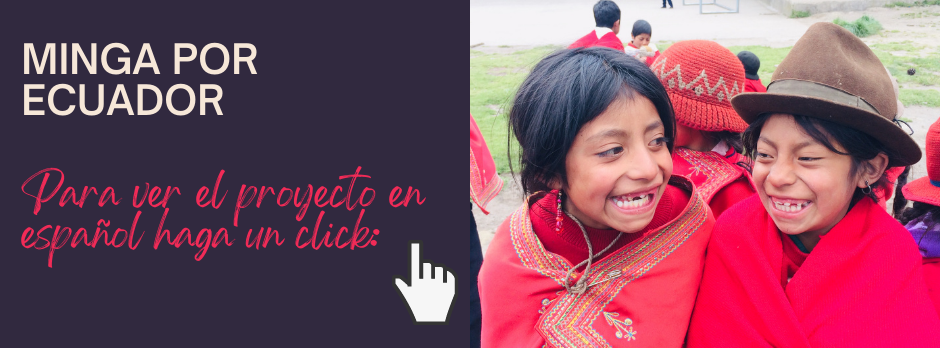
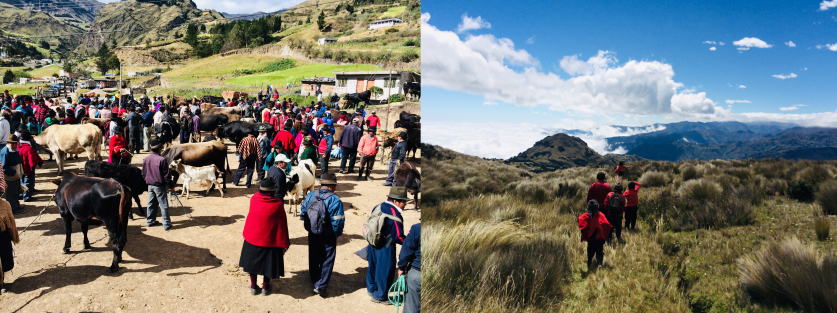
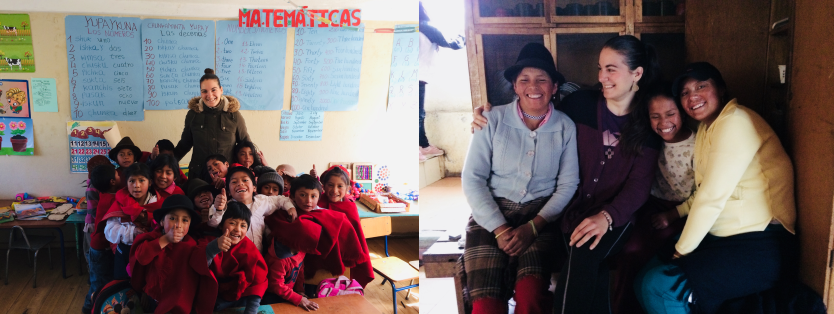

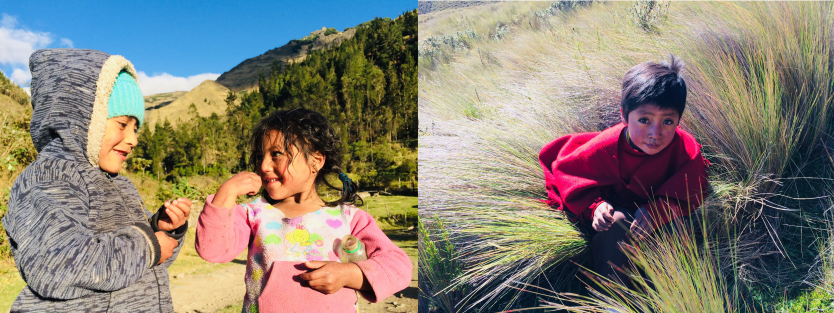

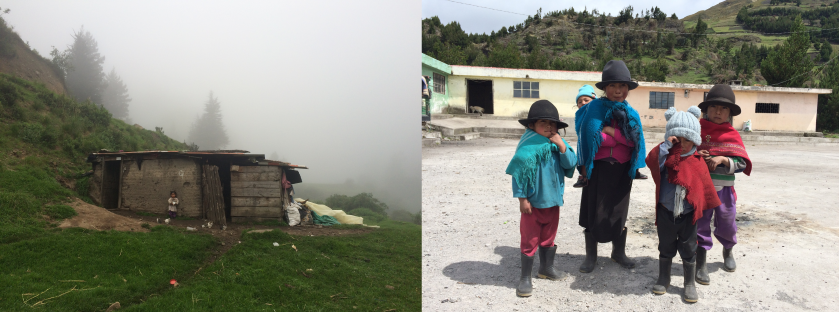
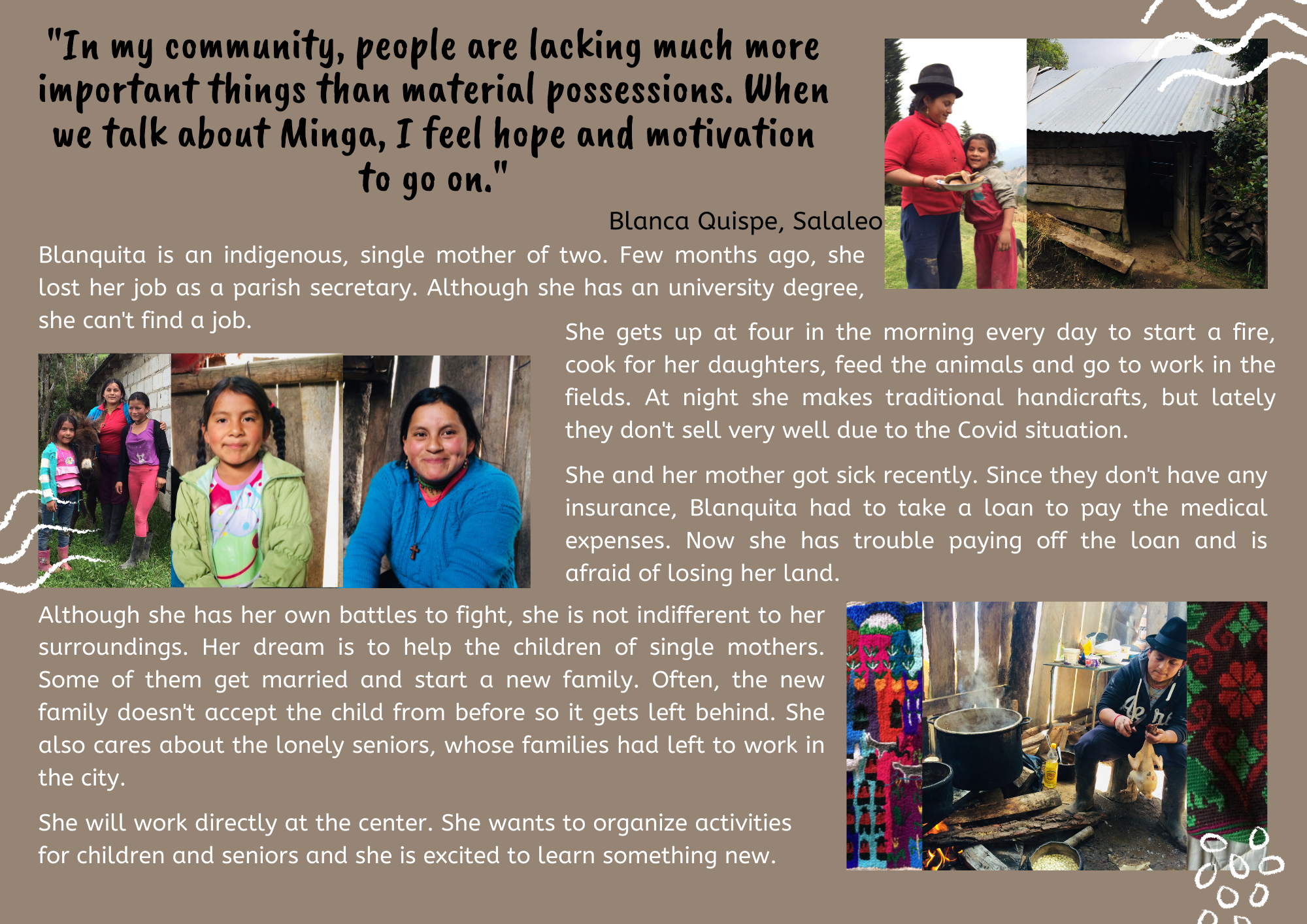

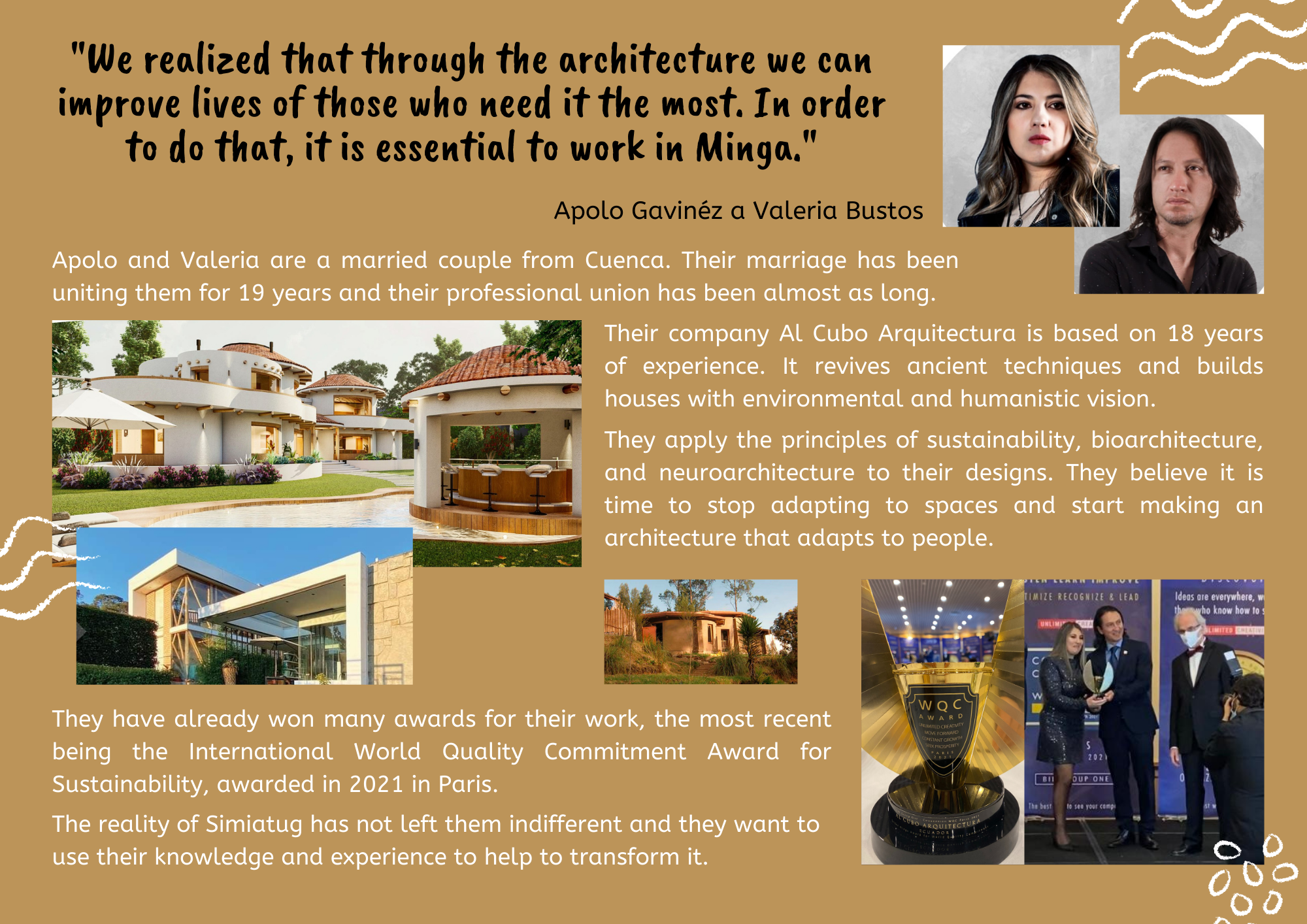
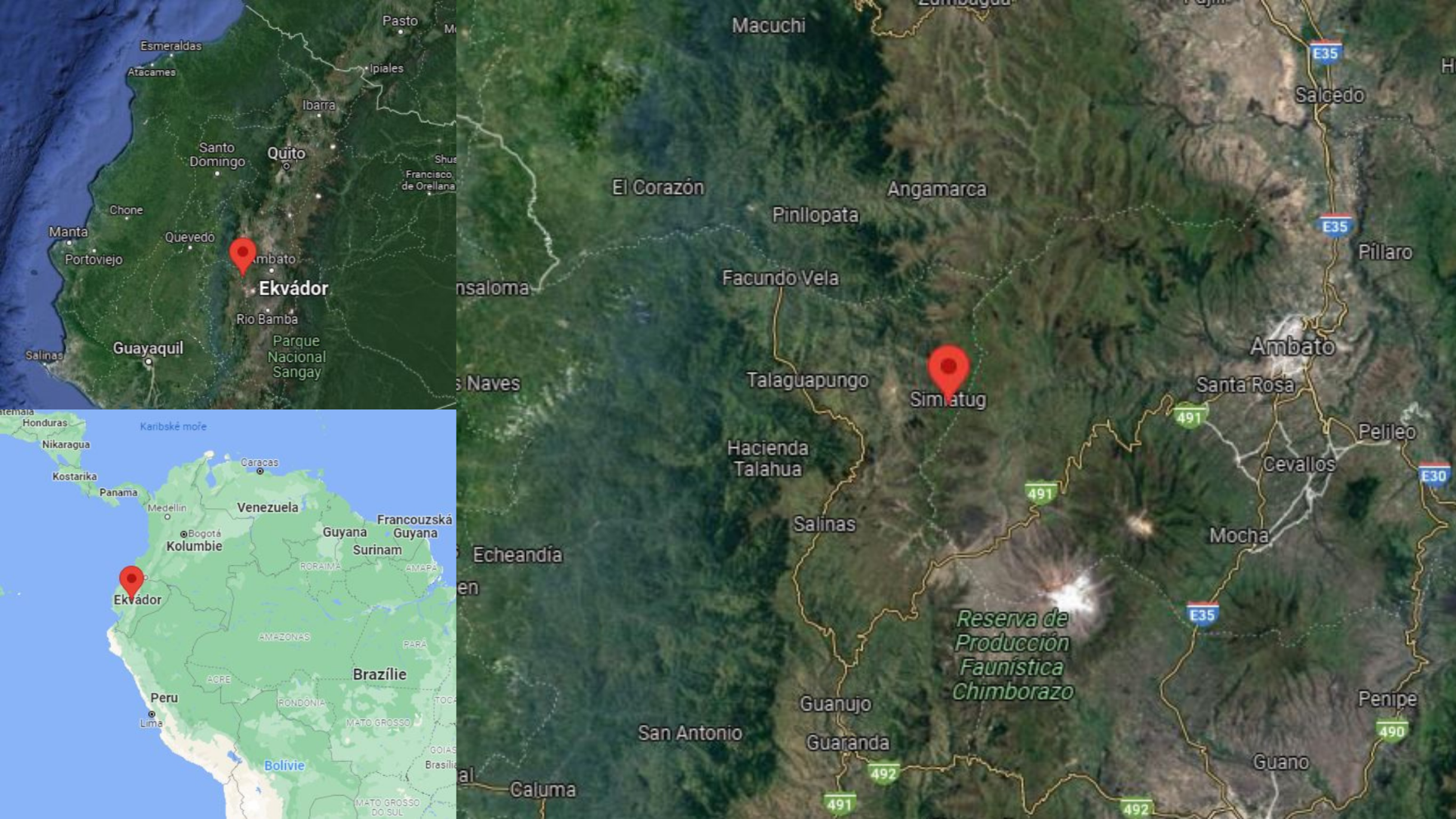
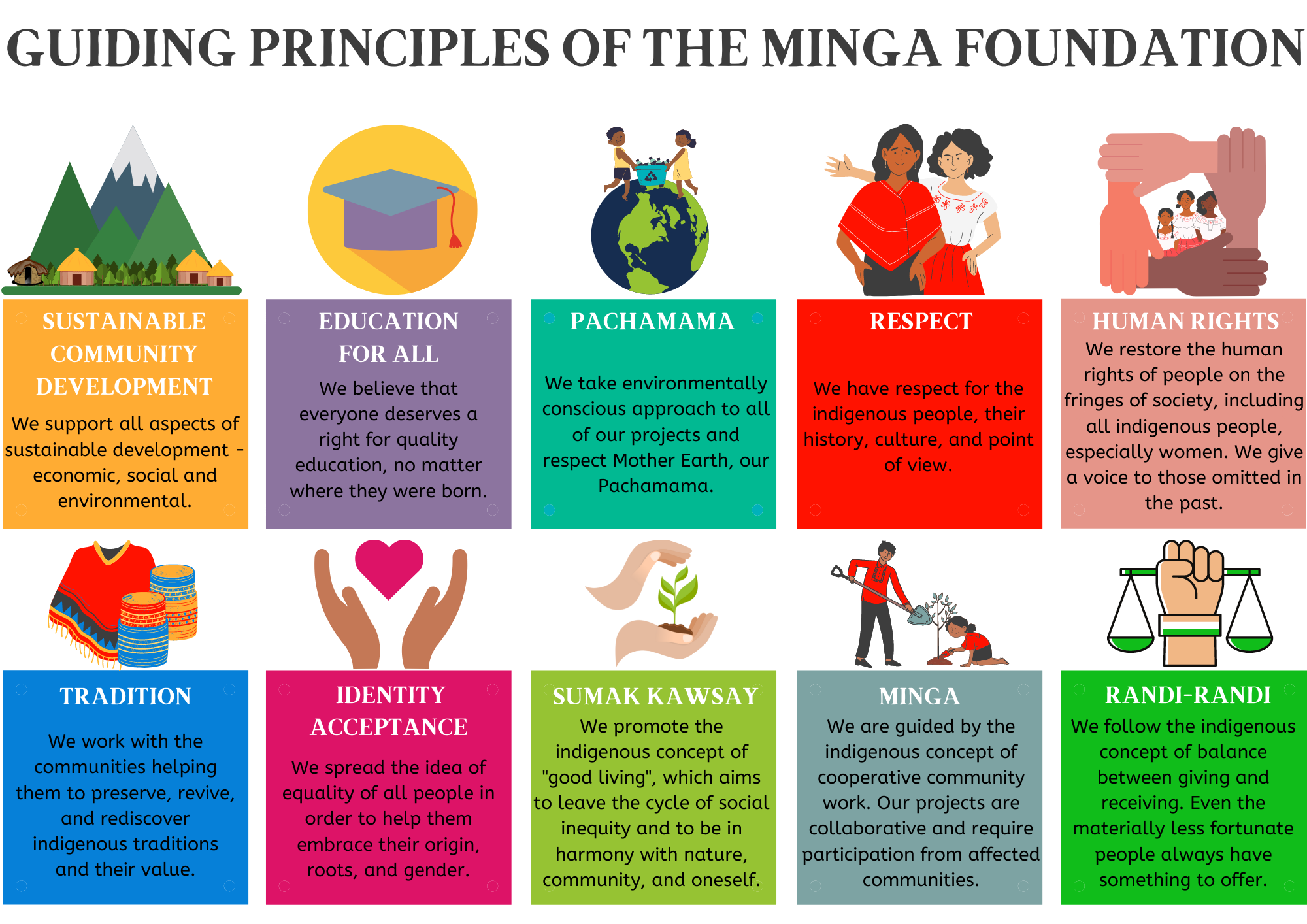



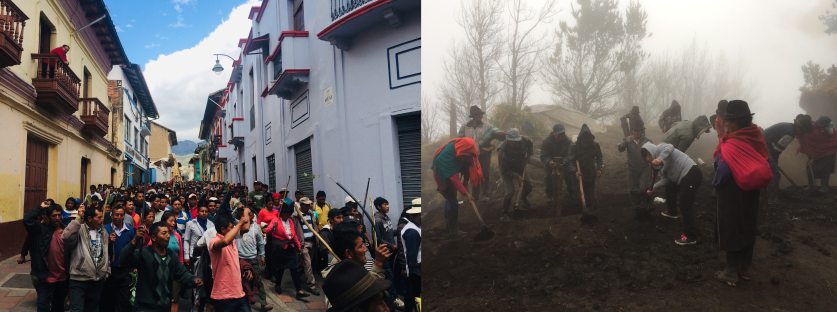
Comments